Global marketing is no longer just the preserve of big-budget brands, nor is it a problem for marketing managers who handle all marketing efforts.
Today, any company with a creative approach and a solid understanding of international markets can make a name for itself worldwide.
Let me explain what a good global marketing strategy should look like and share some of the best examples around the world.
Table of contents
What is Global Marketing?
Global marketing is about packaging your products to meet the needs and preferences of a universal market. It involves developing, consolidating, positioning and promoting your products and services while focusing on global consumers.
Global marketing is not a new concept. Established companies like Coca-Cola have been using this strategy to reach their international consumers for decades.
With the invention of social media, websites and other online advertising agencies, global marketing has become very easy. Both small and large businesses can use this approach to expand their customer base.
This marketing approach requires strategies that will help you master the global markets and connect with the consumer in the most acceptable way.
In my experience, this starts with in-depth new marketing research to understand who your consumers are, what countries they come from, what type of your products or services appeal to them more, and what approach works best for them.
The marketing process may also require localizing your brand to reflect the needs and wants of the people the strategy is intended to reach.
With that being said, Localization is crucial to any global marketing plan. Some brands opt for a global standardization strategy that is the same for everyone.
5 global marketing strategies explained
1. Localization
Localization means adapting a brand, product or service so that it appears to be made for a specific local market, even if it originally came from somewhere else.
Here’s what marketing localization typically includes:
- Translate content into the local language.
- Adapting style and layout to local purchasing habits.
- Optimize graphics, colors and designs to suit cultural preferences.
- Display prices in local currency and the correct units of measurement (e.g. metric).
- Formatting dates, addresses and phone numbers based on local standards.
- Use of popular local communication channels.
- Ensuring global campaigns comply with local laws.
“We localize content into four different languages, but we never just translate it. We ensure that every piece, from blog posts to social media, is tailored to the specific market,” he says Mia Jozipovic, Content Manager FamilyCare Group.
“For example, we created four articles about pet care prices in Croatia, the Czech Republic, Slovakia and Hungary. Each item had its own infographic with a map of the respective country and highlighting local prices. It’s not for nothing that these items are among our best rated.
“This is what maps look like in two similar but completely different (localized) articles:
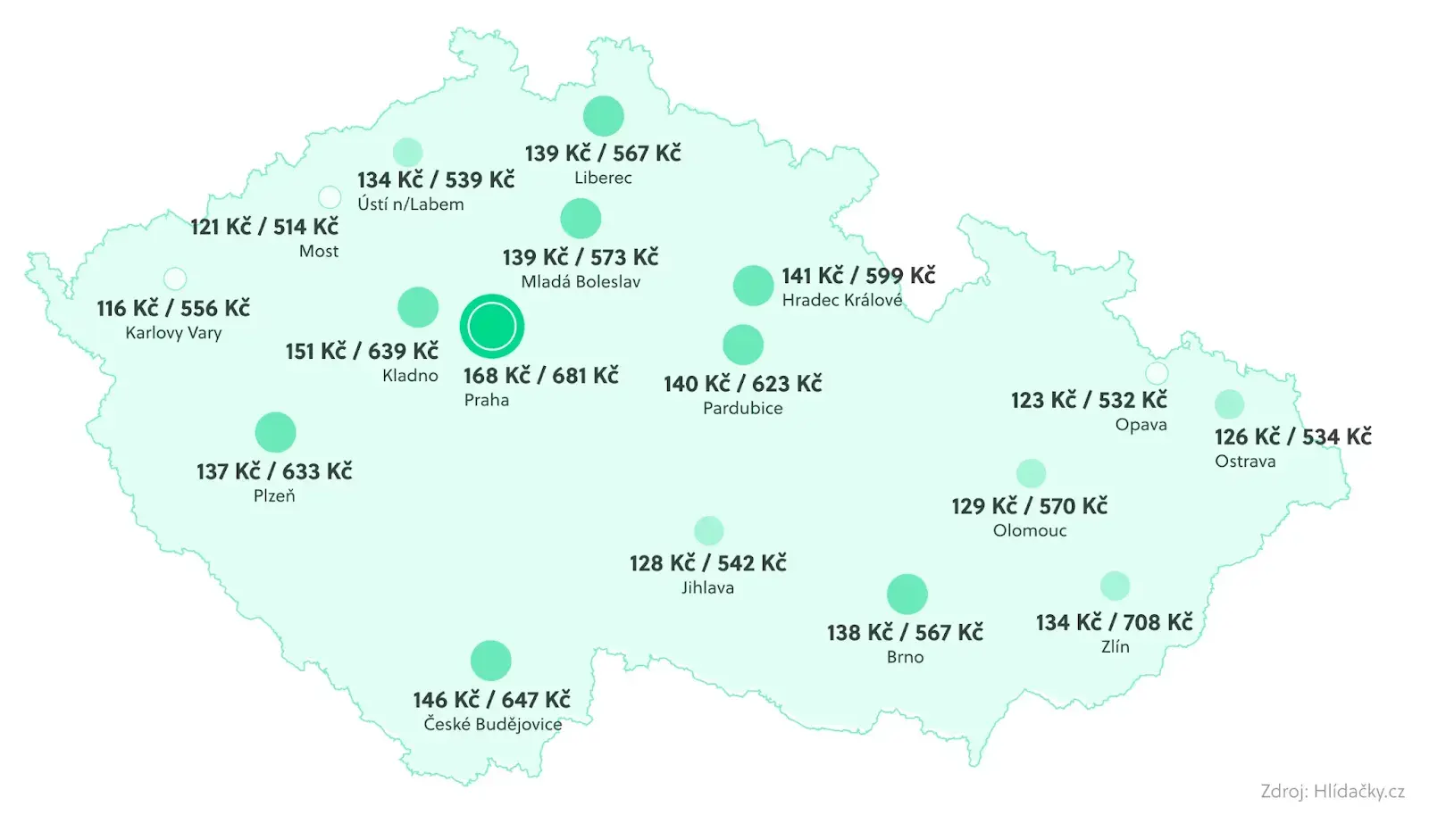
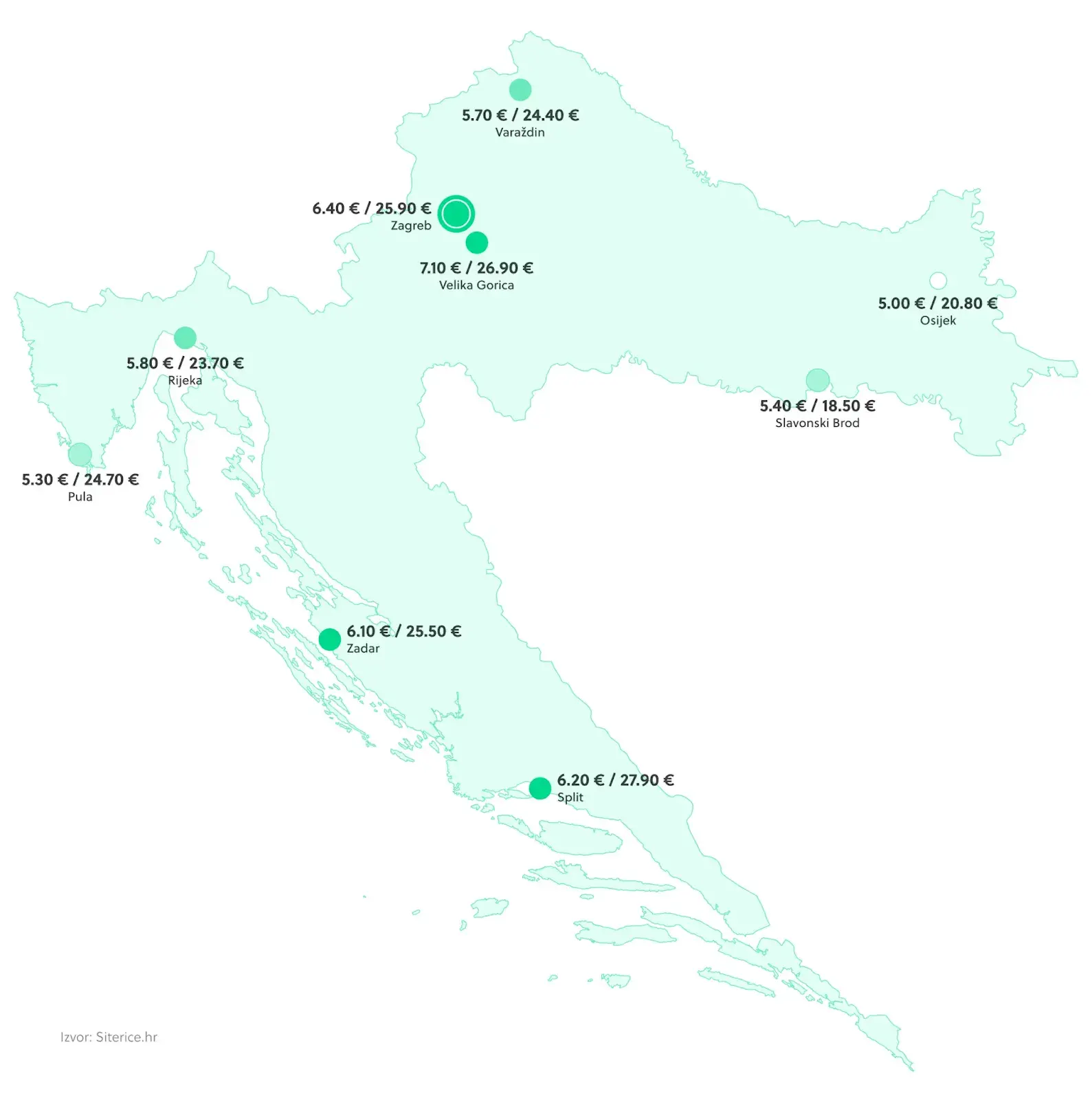
“We also always try to find a relevant influencer or expert for each market when localizing an item,” she added.
“Basically, we work with four different experts from four different countries on the same topic. This not only increases the credibility of the article, but also makes the distribution of the content more successful. And of course the content feels more relatable to local readers.”
Wondering how bad the localization looks? Uber Japan is a perfect (or better yet) imperfect) Example.

The app’s user experience is full of missteps, such as mixing English and Japanese during account setup, requiring names in the Western “First-Last” format instead of the Japanese “Last-First” format, and using a US-style address entry, which is ignored Autofill by zip code in Japan.
These oversights reveal the pitfalls of simple translation without true cultural adaptation.
Pro tip: I do not recommend using online translators or a ChatGPT for this purpose. Hire local content creators or agencies who understand the nuances of the market to proofread all copy. Not only do they ensure that your content is linguistically correct, but also culturally relevant and engaging.
2. Glocalization
No, that’s not a typo. The term “glocalization” conflates “global” and “local.” He mixes global marketing strategies with a local flavor and it’s a smart way for businesses to connect with diverse customer bases.
This approach is particularly effective in industries such as retail, where consumer preferences can vary significantly from region to region.
IKEA offers a great example of this.
You really understand how different habitats are around the world. In Japan, for example, smaller pieces of furniture are offered that fit perfectly into compact apartments.

In addition, there are in India IKEA capitalized on local optimism by emphasizing that improving home life does not require wealth. Their marketing emphasized family values and simple joys (things that Indians truly value) and positioned the brand as accessible to all.
They also engaged the community through workshops and small events, fostering a sense of belonging and connection.
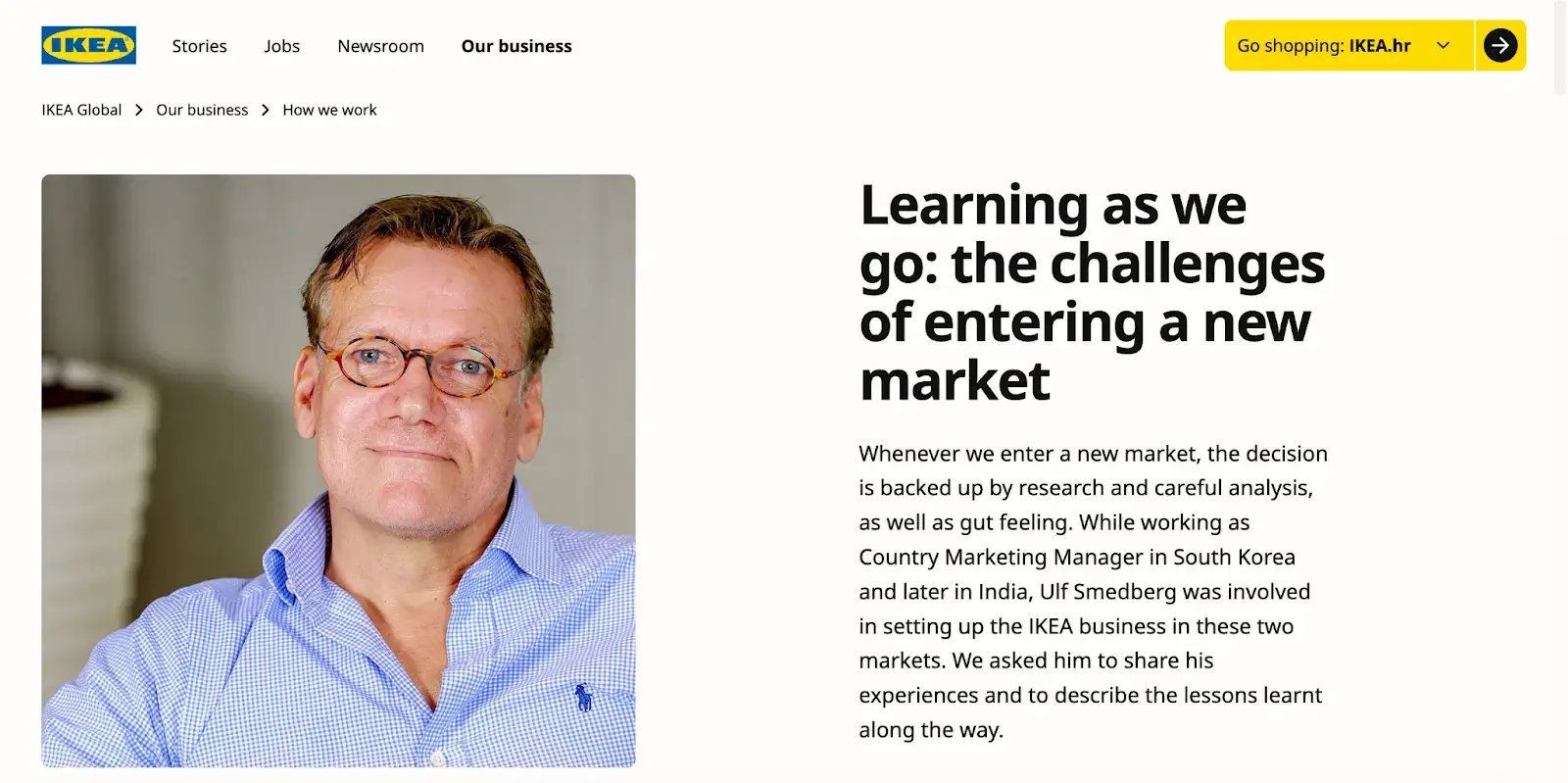
In South Korea, IKEA focused its marketing on the new president’s good luck message.
They encouraged people to create a comfortable home without spending a lot, which resonated with busy Koreans who want balance in their lives. To gain trust, IKEA pledged to invest in the community for the long term and worked closely with local leaders to address concerns about foreign competition.
Ulf Smedbergformer Country Marketing Manager of IKEA, revealed what the company did first:
“Our first and arguably most important step was to understand the culture of the country and the aspirations of its people. We researched what local consumers’ lives are like at home and tried to get a feel for their needs, expectations, hopes and dreams. Only then could we begin to position the IKEA brand and create an offering that makes sense in this context.”
Pro tip: I recommend developing a two-tier marketing strategy where global campaigns set the overarching theme, but local teams have the flexibility to adapt tactics, messaging and execution to regional preferences and trends.
3. Transnational strategy
A transnational strategy means combining global efficiency with local flair. It’s about adapting certain parts of a product or marketing strategy to local markets while taking advantage of centralized operations.
Companies find the optimal compromise between global consistency and local relevance by standardizing some things, such as a product’s core features, and adjusting others, such as packaging and advertising.
Take Pepsi for example. They often change their bottle designs to feature local sports stars or teams at major events such as the Olympics and UEFA European Championships.
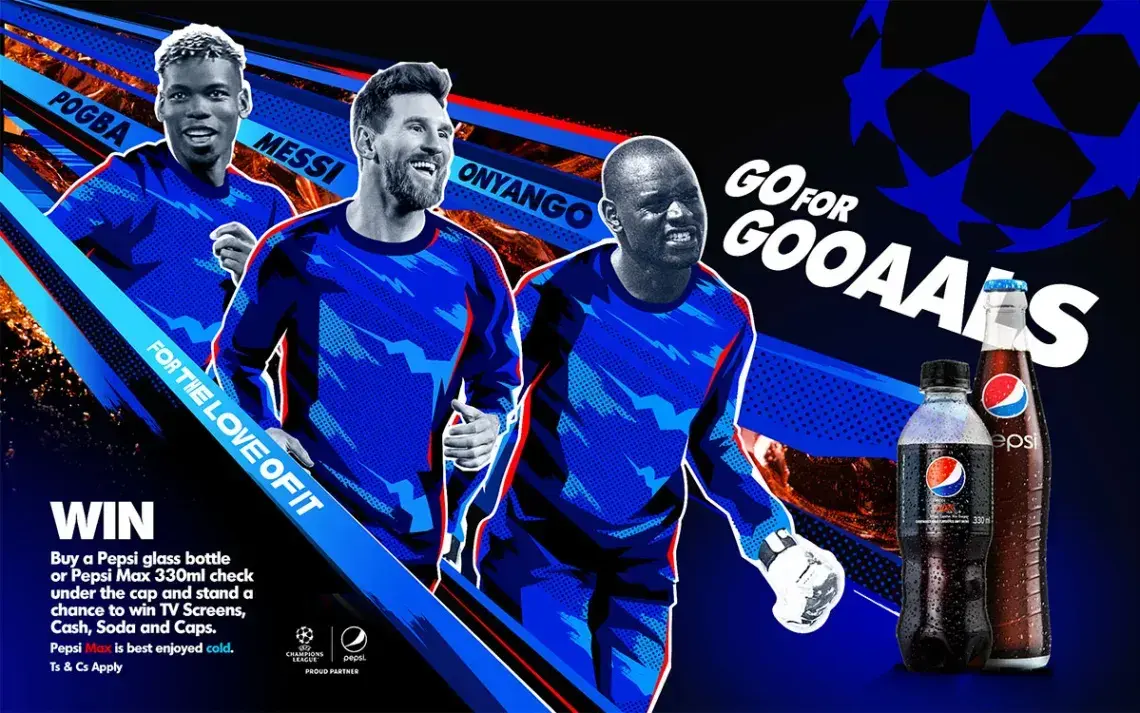
So while the drink inside remains the same no matter where you are, the outside reflects what is popular and meaningful in each country.
Pro tip: Create feedback loops that allow local consumers to express their preferences. Use surveys or social media surveys to gather insights and ensure marketing strategies remain aligned with what consumers want.
4. Product customization strategy
The product customization strategy adapts products to local needs or preferences without losing their core identity.
You’ll see this across industries where companies are optimizing features to align with cultural expectations or meet local regulations.
The automotive industry is one of the best examples.
Automakers customize everything from steering wheels to safety specifications depending on the country. In Australia and the UK, cars are made with right-hand drive, while in the US and much of Europe they are left-hand drive.
They also adjust the turn signal colors – red in the US and yellow in Europe – to comply with regional regulations.
Technology companies are also practicing adaptation.
For example, PlayStation has different power plugs for the USA and Europe.
In addition, although the Chinese and American versions of the Apple iPhone are similar in terms of operating systems and features, there are some differences. For example, FaceTime audio calls are disabled by default on iPhones sold in China, even though they are activated on American models.
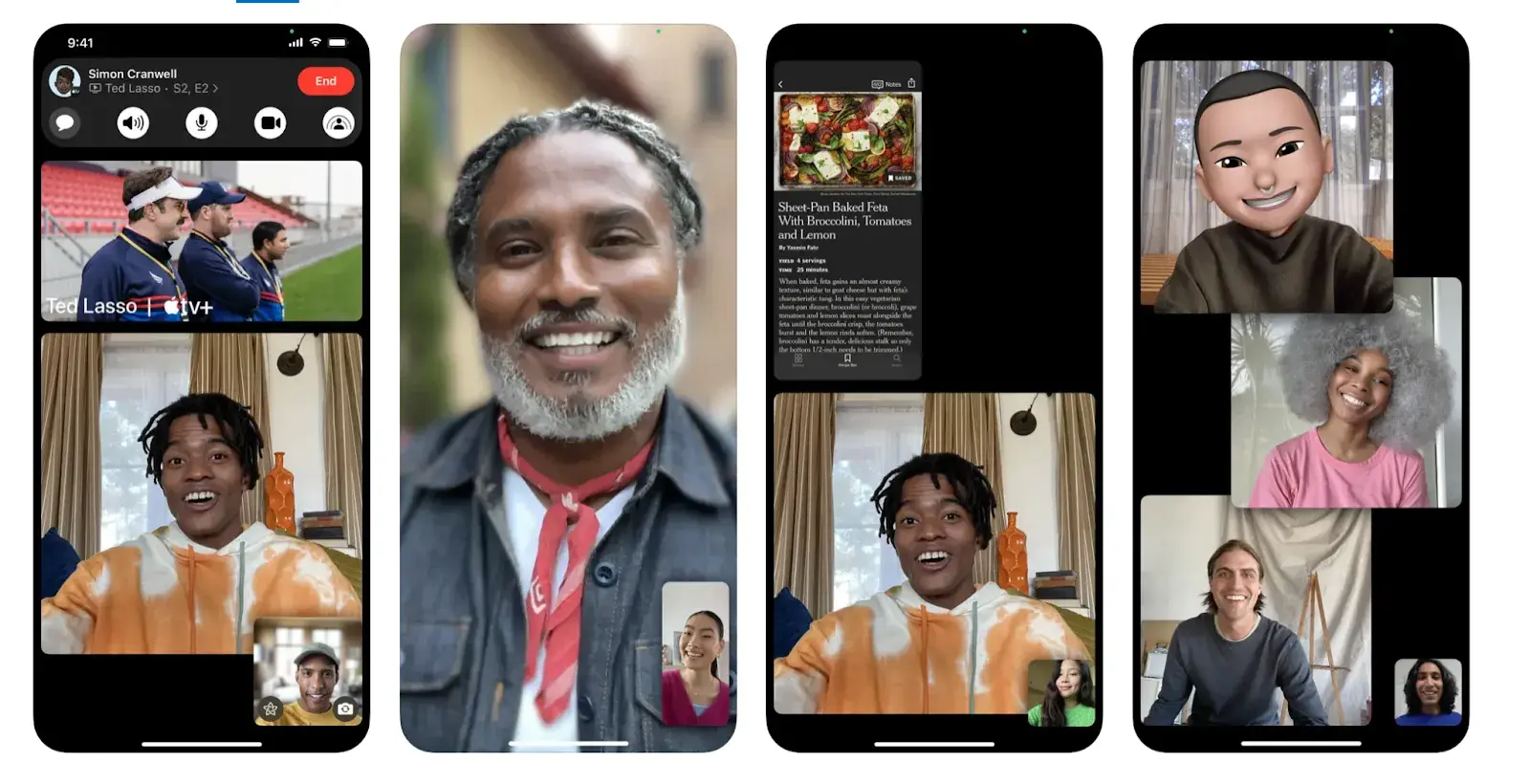
Pro tip: Design products with modular features that can be easily customized to local preferences. When it comes to software, make sure it has modular options that allow for easy updates or changes without redesigning the entire system.
5. Global standardization strategy
A global standardization strategy refers to the ability to use standardized marketing messages and campaigns across markets, countries and cultures.
The world’s largest brands such as Adidas and Coca-Cola use a global standardization strategy to create a consistent brand experience across regions and languages.
The experience and images are almost the same no matter where you visit these brands.
Unlike localization, where there is a more differentiated marketing approach for each market, global standardization offers significant cost advantages. This approach requires fewer messages and fewer campaigns.
The key, however, is knowing when a global standardization strategy will be effective. You need to investigate whether customers use or think about your products differently depending on the market.
A global standardization approach makes sense when there are no differences in usage and understanding from country to country.
Deciding whether to localize or standardize globally is one aspect of developing a great global marketing strategy.
To give you an idea of what a great global marketing strategy looks like, I’ve compiled a list of brands that totally get it.
From adapting their social strategies to translate into multiple languages to adapting their menus to meet the desires of a diverse group of people, these brands are taking positive steps toward a solid presence around the world.
So if you are looking for inspiration on this Develop a successful international marketing strategy and want to expand your company’s reach, check out these examples of the world’s most successful companies.
Examples of global marketing
- Red Bull
- Airbnb
- Dunkin
- Dominoes
- Rezdy
- World Wildlife Foundation
- Hawksford
- Nike
- McDonald’s
- Innocent drinks
- Traffic ticket clinic
- Coca Cola
- Spotify
1. Red Bull

The Austrian company Red Bull does an excellent job of global marketing, so many Americans assume that it is a local brand. How?
One of their most successful tactics is hosting extreme sports events around the world. From the Red Bull Indianapolis Grand Prix to the Red Bull Air Race in the UK to the Red Bull Soapbox Race in Jordan, the brand’s powerful event marketing strategy takes them here, there and everywhere.
In addition to events, Red Bull’s packaging also contributes to its global appeal.
This ranking provides insight into the top energy drink brands in the US for 2023 based on sales. It turned out that Red Bull was the frontrunner with around $7.34 billion.
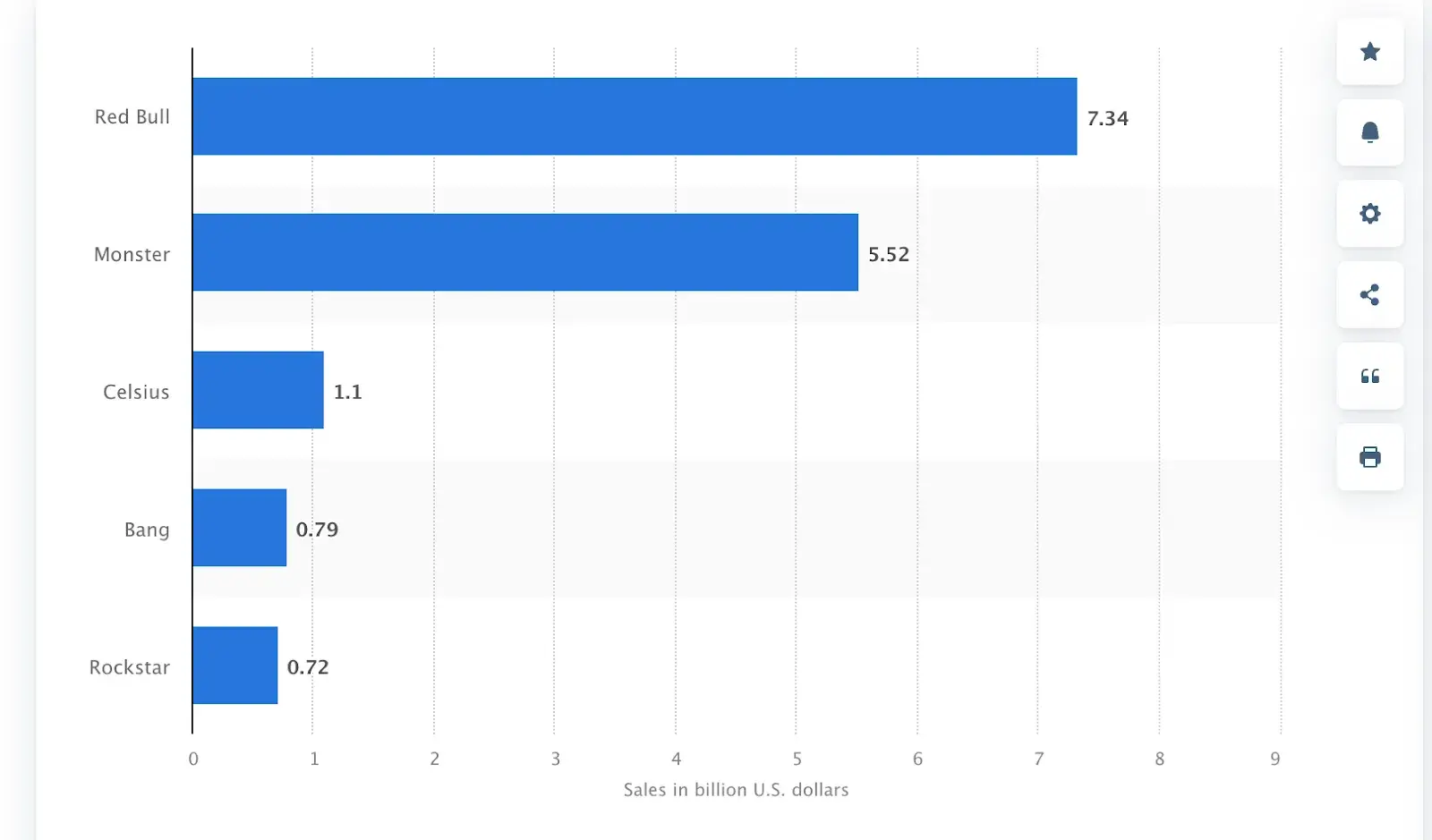
How to emulate Red Bull’s strategy
It may seem unattainable for smaller brands to achieve Red Bull’s international recognition, but I think you can adopt the brand’s strategy by offering a remarkable product. Then keep the same packaging no matter where you distribute it.
You can also host virtual events in different time zones and regions.
2. Airbnb
Airbnb, a community marketplace where people can list and book accommodations worldwide, was founded in 2008 in San Francisco, California.
Since then, Airbnb has grown Over 7 million entries in over 34,000 cities worldwide. Make a significant contribution to the company’s explosive global success? The video campaign is titled “Made possible by hosts.”
Airbnb launched the campaign to bring its global community of hosts and guests closer together in the wake of COVID-19. The company representativeAirbnb Advertising – Forever Young, made possible by hostsI chose the campaign to “highlight the magical experiences that hosts offer their guests.”
To create the campaign, Airbnb captured real videos and photos from guests and inserted them into a video to create the “feeling of nostalgia” we feel when traveling.
Over 3 million people engaged, created content or talked about the campaign. Only one of his videos has over 3.5 million views.
How to emulate Airbnb’s strategy
Airbnb is by nature an international brand. Even if you identify as a more local brand, there are ways to globalize your efforts.
First, focus on different customers in different regions when creating a testimonial or case study. You can also ask your international customers to contribute a photo or video of the product they are using and post it to your social media content.
3. Dunkin’

National Donut Day takes place every June. While we’re getting our hands dirty with a Boston cream (or two) here in the US, Dunkin’ China is serving up a fresh batch of dry pork and seaweed donuts.
With over 3,200 stores in 36 countries Outside the U.S., Dunkin’ has evolved its menu to satisfy the sweet tooth of its global customers.
From Grapefruit Coolatta from Korea to Mango Chocolate Donut from Lebanon to Dunclairs from Russia, it’s clear that Dunkin’ is not afraid to celebrate cultural differences to strengthen its international presence.
How to emulate Dunkin’s strategy
If you run a restaurant business, Dunkin’s strategy should provide plenty of inspiration.
To globalize your restaurant brand, try serving regional or cultural menu items on special holidays for those cultures and regions.
You don’t necessarily have to expand into international regions first. However, if it is financially feasible, opening new locations or launching regional websites can help you become a global brand.
4. Dominoes
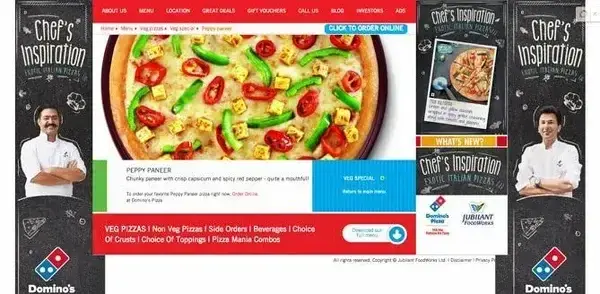
Similar to Dunkin Donuts, Domino’s has prioritized menu innovation to increase international interest and awareness.
By seeking to gain a better understanding of the preferences of the markets it is trying to penetrate, Domino’s can deliver cakes diverse enough to attract international attention.
How to imitate Domino’s strategy
Domino’s strategy is another strategy you should use for inspiration when running a restaurant business. Try inviting chefs from different cultures and regions, then have them prepare your menu items in a regional style and with regional ingredients.
Highlight the chefs on your social media profiles. This way, you show your followers in these regions that you’re also top of mind, thereby expanding your global reach.
5. Rezdy

Some companies may not try to attract global markets directly, but if their customers do, they better know how. Rezdy is an Australia-based reservation software designed to make online bookings smoother for tourists and travel agents.
Although Rezdy’s customers are based in Australia, the company needs to cater to its customers’ international visitors. The homepage says it works for operators and agents in over 100 countries.
The service is used worldwide, with Hundreds of personalization options for the time zone, language and currency of the tool. Rezdy’s website and marketing materials are in English and are therefore aimed at English-speaking tour operators, particularly in Australia, the United Kingdom and North America.
They know that their customers’ target group is abroad and therefore emphasize the internationalization capabilities of the tool.
How to emulate Rezdy’s strategy
Rezdy effectively globalizes its services by taking into account that its customers’ target audience is in other countries. Even if your company markets to other regional companies, view their global customers as if they were your own.
If your product, tool or software can be used in various applications abroad, include this in your marketing materials – even if you operate regionally.
6. World Wildlife Fund
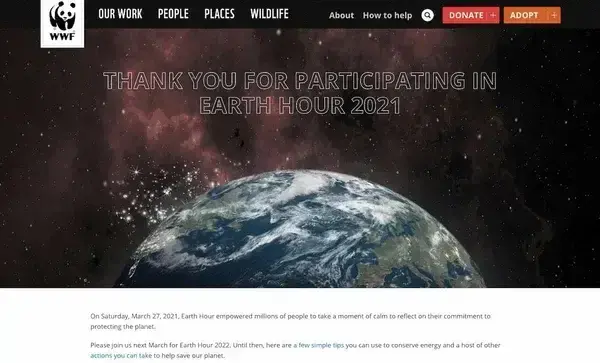
Earth Hour 2024 rallied global communities to raise awareness about environmental protection, with people in 180 countries dedicating 1,466,285 hours to activities such as cleanups, tree plantings and educational events.
Famous landmarks such as the Acropolis and the Sydney Opera House dimmed their lights as #EarthHour trended in 25 countries.
In Eastern Europe, countries such as Bulgaria, Romania and Hungary were actively involved: Bulgaria held charity performances, turned off city lights and collected 3959 hours of community service; Romania organized events in 107 cities, in which 202 schools took part; and Hungary conducted eco-hikes near Budapest.
The Ukrainian WWF team collaborated with the government’s efforts to promote environmental education. Through these collective efforts, Earth Hour left a global digital footprint and inspired millions of people to reconnect with nature.
How to emulate WWF’s strategy
WWF has hundreds of offices that make it easier for nonprofits to operate globally. However, thanks to the Internet, it is easier than ever to connect with an international audience, especially for the launch of a specific initiative such as Earth Hour.
If you have a cool idea, don’t be afraid to try it out in an international market – just make sure it’s targeting the right audience. (Don’t be afraid of the dark either).
7. Hawksford
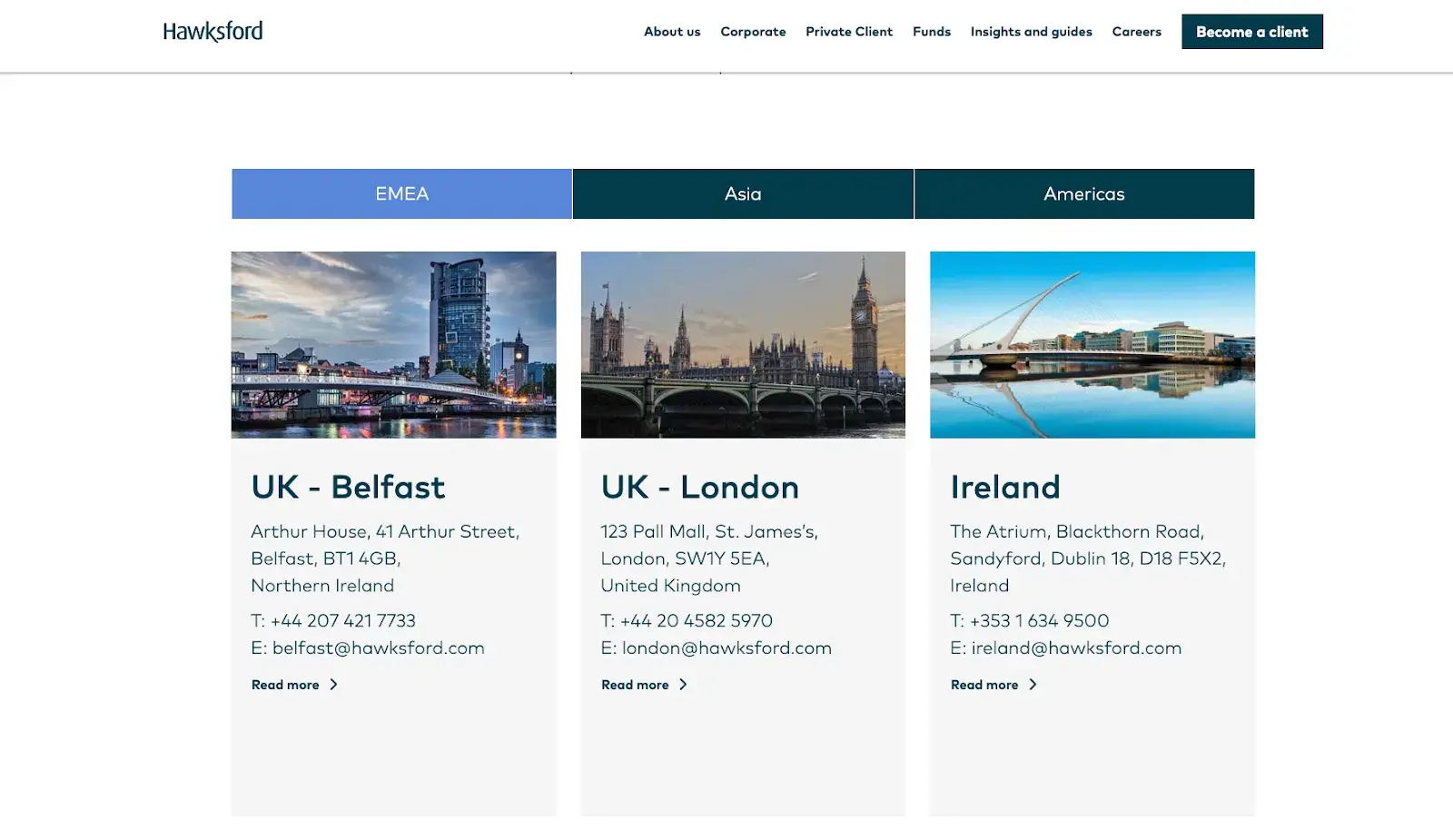
With offices in Dublin, London, Vancouver, Atlanta and Wellington, Hawksford has become an international authority on corporate and trust structures. But reaching an international audience requires more than just offices around the world.
For this reason, Hawksford ensures that his blog flows content that appeals to different markets. They publish a lot of content on international affairs related to the company’s practice.
External Hawksford content articles are also displayed, covering news from countries such as Germany, Ireland (where there is an office in Dublin) and the United Kingdom (where there is an office in London).
How to emulate Hawksford’s strategy
This is a great example of focusing on common interests shared across your company’s different markets while making the content relevant to customers by region.
Globalizing your marketing can be as simple as creating content that appeals to different audiences in different regions.
8. Nike
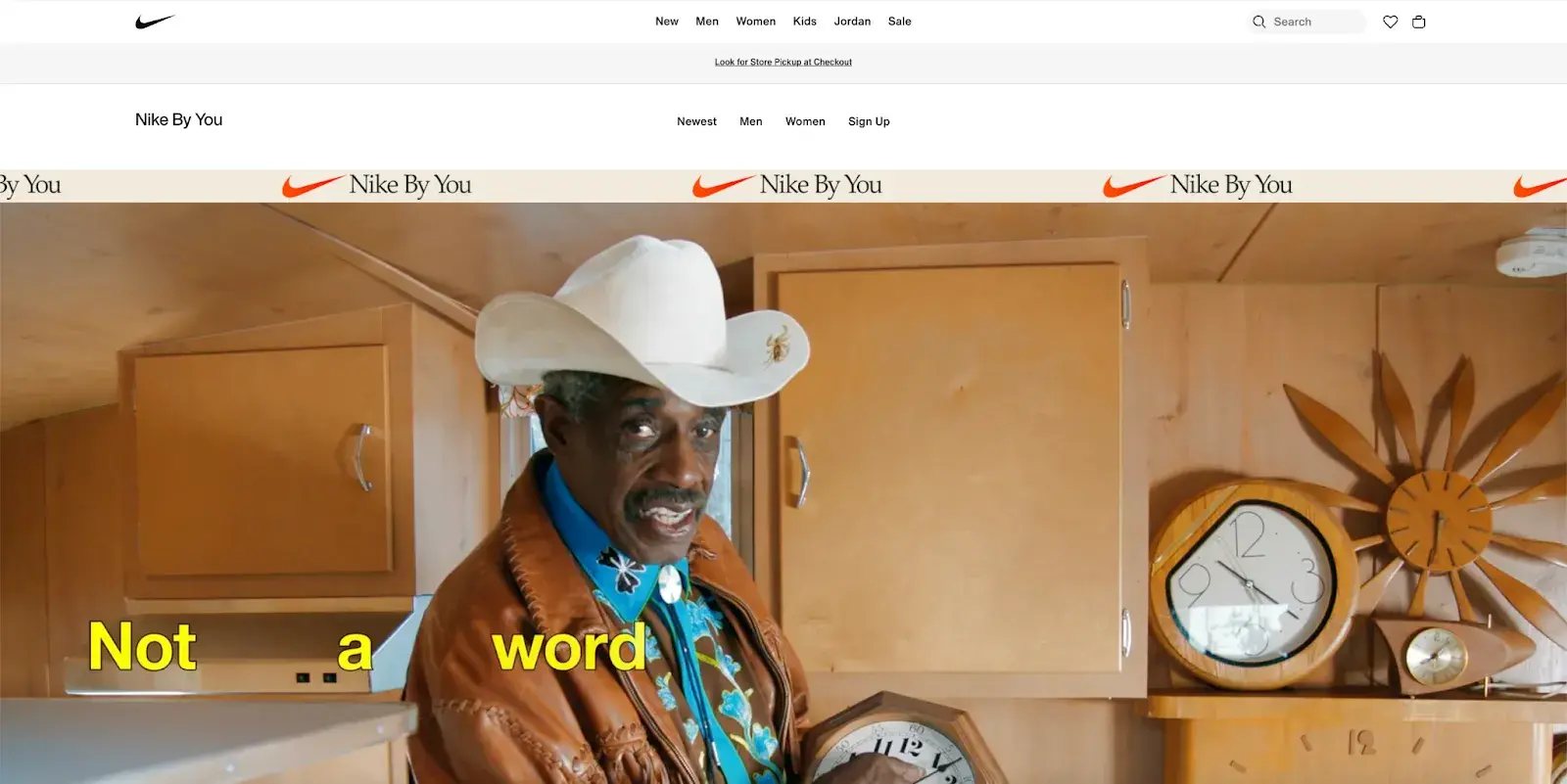
Nike has strengthened its global presence through careful selection of international sponsorships, such as its previous long-standing relationship with Manchester United.
Although sponsorship spend can be quite unpredictable – demand costs tend to rise due to triggers such as championships and tournaments – these partnerships have helped the brand capture the attention of a global audience.
Nike’s co-creation platform “Nike by You” serves as another strategy to target international markets. By putting the power of design in the hands of the consumer, Nike can deliver customized products that fit different cultural tastes and styles.
How to emulate Nike’s strategy
Collaborate with other brands, influencers and ambassadors in your international target markets. Choose them carefully. For example, Manchester United is a prominent cultural force in the United Kingdom, which has helped Nike grow in the country.
If you sell a consumer product, why not also give your audience the ability to customize and resell the products? In the end, you will reach a much larger audience and consumers from different regions will have a much better grasp of their region’s preferences and tastes.
9. McDonald’s
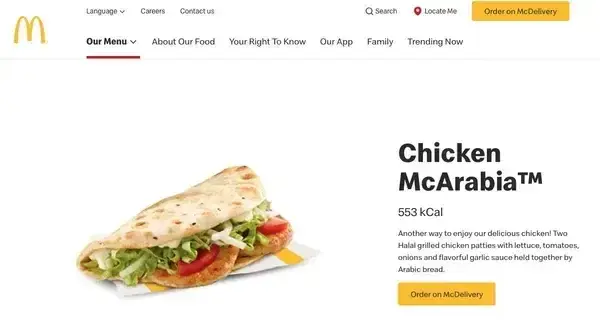
We all know that McDonald’s is a successful global brand. While McDonald’s keeps its overarching branding consistent, it engages in “glocal” marketing efforts.
McDonald’s brings a local flair to different countries with region-specific menu items. For example, McDonald’s offers McArabia, a flatbread sandwich, in its Middle Eastern restaurants.
McDonald’s has also added macarons to its French menu.

And has added McSpaghetti to its menu in the Philippines.

No matter what happens, there is something to learn from the giant.
How to emulate McDonald’s strategy
As with the other restaurant examples on this list, opening restaurants in other regions may be the first and most natural answer.
If that’s not possible, especially if you run a local brand, celebrate the flavors of the world by hosting an “International Day” and talking about it on your website.
This approach gets you noticed by those who enjoy these foods every day and helps you spread the word in other markets.
10. Innocent drinks

Innocent Drinks is the UK’s leading smoothie company, but that’s not the only place where you’ll find their products. Innocent products are now available in 18 countries across Europe.
And despite its wide reach, the company’s welcoming branding remains consistent throughout.
For example, the website is very bubbly and includes contact information that encourages the viewer to “call the banana phone” or “stop by Fruit Towers,” which is the name of the company’s headquarters.
While global expansion and rapid growth can sometimes distract a company from consistent branding, Innocent Drinks has remained true to itself.
By ensuring the brand’s voice is interpreted in the same way worldwide, Innocent can create a more recognizable brand.
How to emulate Innocent Drink’s strategy
Stay true to your brand voice even as you expand into other markets. Innocent Drinks is instantly relatable due to its tone on its website and social media. Kindness makes you feel more approachable – and therefore more accessible to a global audience.
And when your brand is consistent across the board, audiences across geographies won’t feel like they’re being cheated out of everything your brand has to offer.
11. Traffic ticket clinic

The term “glocal” can be defined as “think global, act local”. But what happens if you swap the two?
Traffic Ticket Clinic is a traffic ticket law firm that defends motorists in the state of Florida. Not very global, right? Well, Traffic Ticket Clinic understands that America is a melting pot and that Florida is bursting at the seams with different cultures and languages.
Although it is a domestic service, the company’s website is available in English and Spanish. With these options, Traffic Ticket Clinic can accommodate you More than 4 million households in Florida speak Spanish. Don’t miss out on expanding your customer base – sometimes you don’t have to look far to get business.
How to replicate the Traffic Ticket Clinic strategy
One of the easiest ways to start global marketing is to offer your website in different languages. If you have a WordPress website, you can use a translation plugin.
But remember: first look at your target audience to determine the best languages to offer on your website. For example, don’t offer Swahili if you don’t serve East Africa.
12. Coca Cola
Coca-Cola is a great example of a brand known for its international marketing efforts. Although Coca-Cola is a large company, it focuses on community programs and invests in small charitable causes.
In Egypt, for example, Coca-Cola has built 650 clean water systems in the rural village of Beni Suef and sponsors Ramadan meals for children throughout the Middle East.
In India, the brand sponsors the Support My School initiative to improve facilities at local schools. The brand sticks to selling a feeling that shouldn’t be lost in translation: happiness.
How to emulate Coca-Cola’s strategy
Try to promote your values in your marketing efforts by investing in communities worldwide. You can start small, perhaps with an annual sponsorship or recurring donation, and work your way up to starting a local charitable effort.
Also try to appeal to a universal human feeling. If you’re a hospital marketer, you can appeal to sadness and hope in a one-minute video about a hospital visit.
These are feelings that transcend countries and languages and automatically help you reach a global audience.
13. Spotify

We’ve all heard of Spotify (no pun intended), but how did it suddenly and so quickly expand from Sweden to other countries?
In 2023, Spotify increased its annual sales by 12% to 13.24 billion euros. In the last five years, the company has successfully tripled its sales.
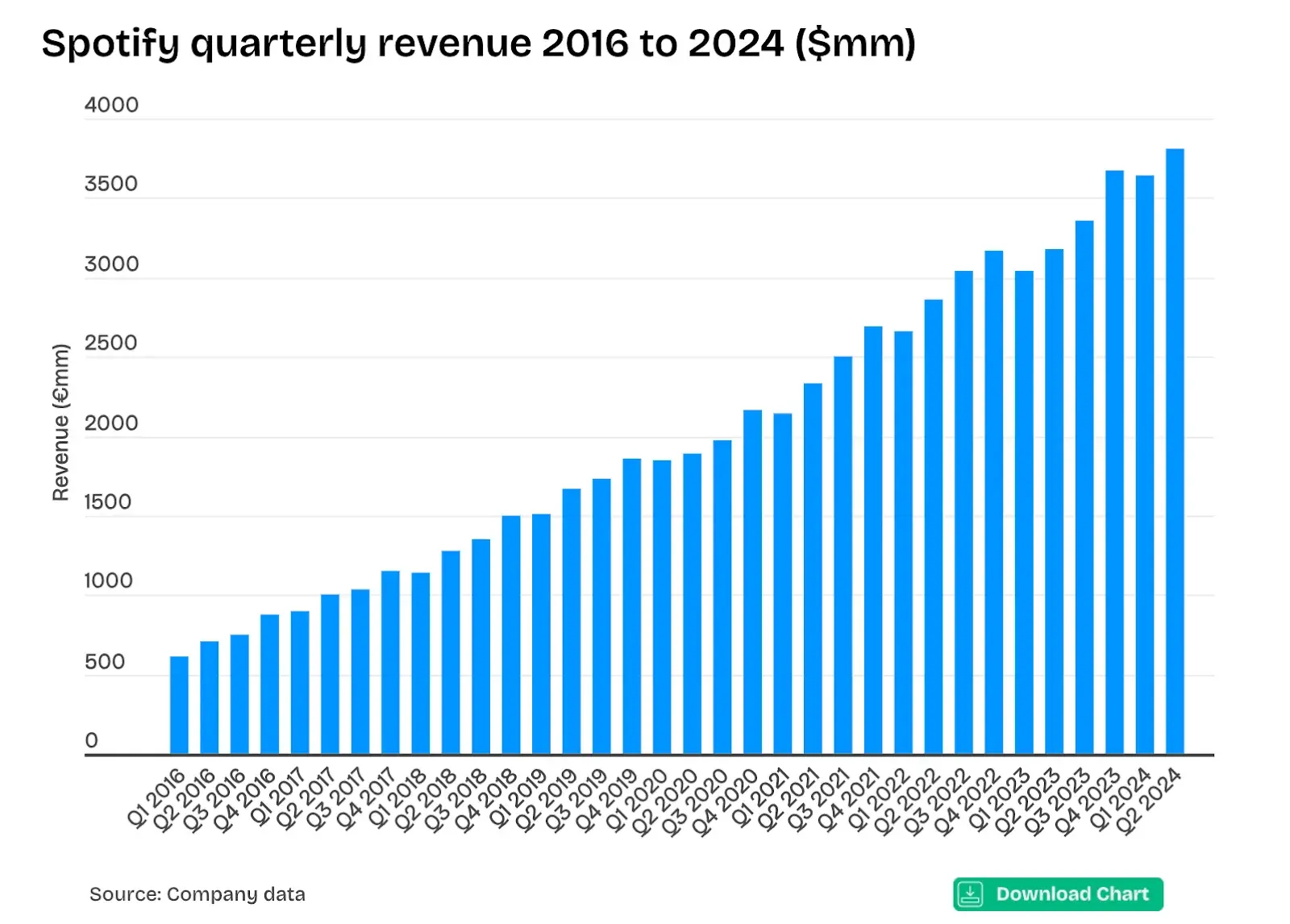
So what’s the secret?
Spotify’s business model focuses on helping you find something new.
It’s one thing to choose a genre of music to listen to – it’s another to choose a “mood” to listen to. On Spotify’s “Browse” page, you can listen to “country” and “hip-hop,” as well as music that fits your “workout” or “sleep” preferences.
By changing the way they describe their content, Spotify is accommodating the habits and lifestyles that people share around the world. This allows international artists to reach listeners from other countries simply because their products are categorized differently.
Spotify now has offices in more than fifteen countries around the world.
Here’s how to imitate Spotify’s strategy
Spotify’s example is a winner because its global marketing strategy is entirely product-based. It offers music, podcasts and media in so many languages. Audiences in these countries couldn’t help but start using the product.
If your product lends itself to this, try offering items or products that appeal to people from different regions and countries.
Global marketing trends 2025
As 2024 comes to a close, the only thing that has remained constant in the global marketing space is change. Here are some Global marketing trends to watch in 2025.
- Personalization is a key focus for leading marketing teams.
- Social media apps could see greater ROI than ever as they evolve into frictionless e-commerce platforms.
- Facebook (actually Facebook) is still proving to be a powerful platform for marketers.
- Short videos offer the highest content ROI and bring in more investment than any other format.
- AI is driving the growth of the marketing industry, but hurdles to adoption still exist, such as concerns about job security, brand reputation, and a lack of knowledge about how to use it.
- Improving the overall customer experience is a great way to beat the competition and encourage users to engage with your business.
Start global marketing in small steps – and then scale it up
Let’s say you have global ambitions for your company. In this case, you need to figure out what customers in different communities have in common – and how to localize your product for these different markets.
Your first step? Get inspired by one of the companies above. Start small and then work your way up as your business grows.
But seriously, don’t rush it. You can’t embark on this without a solid plan. Be strategic and get to know each market. Research is your best friend here.
Make sure you give people what they want – preferably more.
Show genuine respect for their culture, their beliefs and what makes them unique. Once you have done your homework and adjusted your strategy, you can confidently enter different markets. Trust me, with the right preparation you have a good chance of success even on a tight budget.
Editor’s Note: This post was originally published in November 2013 and has been updated for completeness.



